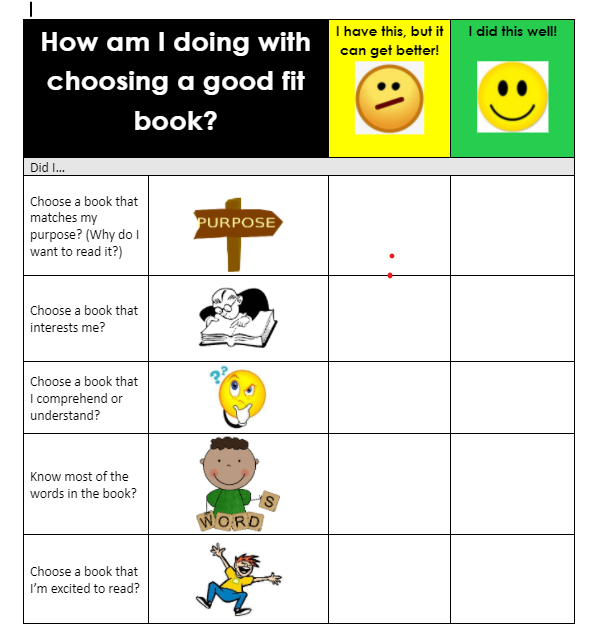Differentiation, lifelong learner, IEP, chunking, Daily 5, Common Core, scaffolding, brain break… Have we lost you yet? Just like with any topic, hobby, specialization, or career, there are trendy buzzwords, phrases, or terminology in education too. As with most trends, it seems like these terms are constantly changing and vying for which one is the “most important” for teachers to tackle and prioritize.
Maybe you’ve heard some of these terms in parent-teacher conferences or you’ve stumbled across them on the internet. Sometimes teachers are so used to hearing them, that they internalize them, think everyone else understands them just as well, and use them without second thought. Personally, I know that I’ve told my mom many-a-story over the phone and I use these terms so rapidly and frequently that I am surprised when she pauses and asks me what one of them means. Isn’t it common sense? Doesn’t everyone know what that means? The answer is NO…so don’t feel like you are alone if you sometimes feel dazed and confused!
One term that has had a big focus or emphasis lately, one which has been the priority of many leaders in education, is student ownership.
When you hear those two words put together, what do you think of? No, it doesn’t refer to “owning” students, although I know I don’t just speak for myself when I say that teachers definitely feel like they own their students in the best way possible, and like they are theirs, when they are in their classrooms-even when virtually!
Student ownership refers to the student taking on the responsibility (of course, only to some extent) of their learning. The student, or child, is aware of (and has a say in) their motivation to learn, their passion for learning, their progress with learning, and their reason for learning. Simply put, it means that the child is not detached from their own learning. They aren’t just doing what the teacher says solely because the teacher says that they have to. Another way of thinking about it is thinking of the student as being active in their learning instead of passive. It is empowering students to know that they are part of their learning and it isn’t something that just happens TO them.
At least, that’s how I define student ownership. When I just Googled the term to check out some other definitions, this was the first one that caught my eye “the stage when students can articulate what they are learning, why they are learning, strategies that support their learning, and how they will use these strategies in the future” (https://www.niet.org/assets/Resources/student-ownership-thinking-problem-solving.pdf).
Lest you think this is just another fluffy pedagogical term (Was that another buzzword?) that sounds nice and pretty but doesn’t have much practical use in the classroom, my experience would argue that you are wrong! Student ownership is proven to have a huge impact on students’ educational growth and achievement.
Think of how education used to be. I’m picturing a movie where the teacher is standing in the front of the room, in front of a chalkboard, lecturing to the students. The students are busy staring out the window and not listening to a word that is being said. The teacher doesn’t really mind because after all, it is up to the student if he/she wants to learn or not, and the teacher is doing her job.
Well, that leads us to a blogpost for another day (note to self: add to my blog brainstorming list the topic of teaching is truly only teaching if the material is being learned). While staying on this topic of student ownership, this refers to almost the polar opposite of what was described in the paragraph above.
As you are maybe a teacher, but most likely a parent reading this, there are many ways for you to encourage student ownership at home, which is the point of this whole post!
- From the very beginning of what you are trying to teach, even if it is just teaching how to push the chair in at the dinner table, be very explicit and clear about WHAT you are teaching and WHY you are teaching it. Your child needs to be made aware of what he/she is learning! If they don’t see the purpose or value for their own life, then you can just forget about the rest of the lesson!
- Make sure your student is aware of his/her own progress. You could have your child graph where he/she started with a skill, where he/she currently is, and make sure you check-in and have conversations and reflections about this. This graphing idea could work for number of questions right, percentages, numerical or alphabetical reading levels, or anything else you can make work!
- Have your child set goals for where he/she wants to be academically with certain skills and standards.
- Provide checklists for your child to use as he/she is working on a task. This will keep your child on track, remind him of the expectations, and allow him/her to see how he/she is doing with each subtask of an assignment.
Check out an example here!

- Rubrics are another helpful tool for your child. When assigning your child a project, you can present a rubric that shows exactly what he/she needs to do in order to be successful with each part of that assignment.
- Perhaps one of the easiest student ownership strategies to incorporate is to give choices to your child! While still requiring them to do what is necessary, you give them the option to make the learning their own. For example, you can give the option of three books to read about a topic, you can let them choose between various writing prompts…the options are endless!
- Give feedback to your child that is both authentic and meaningful. If you tell your child that he/she got a 91% on an assignment, what does that really tell them? However, if you take the time to tell them what specific skills he/she did well on, what skills he/she can continue to work on, they will have a better idea of where they currently stand and what is necessary in order to improve.
- Make connections to the real world. This comes full circle back to the idea I shared in the first bullet point- If your child doesn’t see how the skill or strategy that is being taught is useful to their everyday, real life, then the rest of the lesson can just be forgotten!
To summarize, student ownership is being very clear with the student about their learning and providing the student with opportunities to self assess or reflect upon their own academic growth as well. The whole process is interactive! The student’s role is just as important as your role as the teacher or educator.
How do you see yourself trying this out at home with your child? We know there’s so much to consider with the education of your child, and this is not intended to be one more thing piled on. Therefore, we urge you to start small. What is just one strategy listed above that you can incorporate next week to improve in this area, even if it is just a little?






